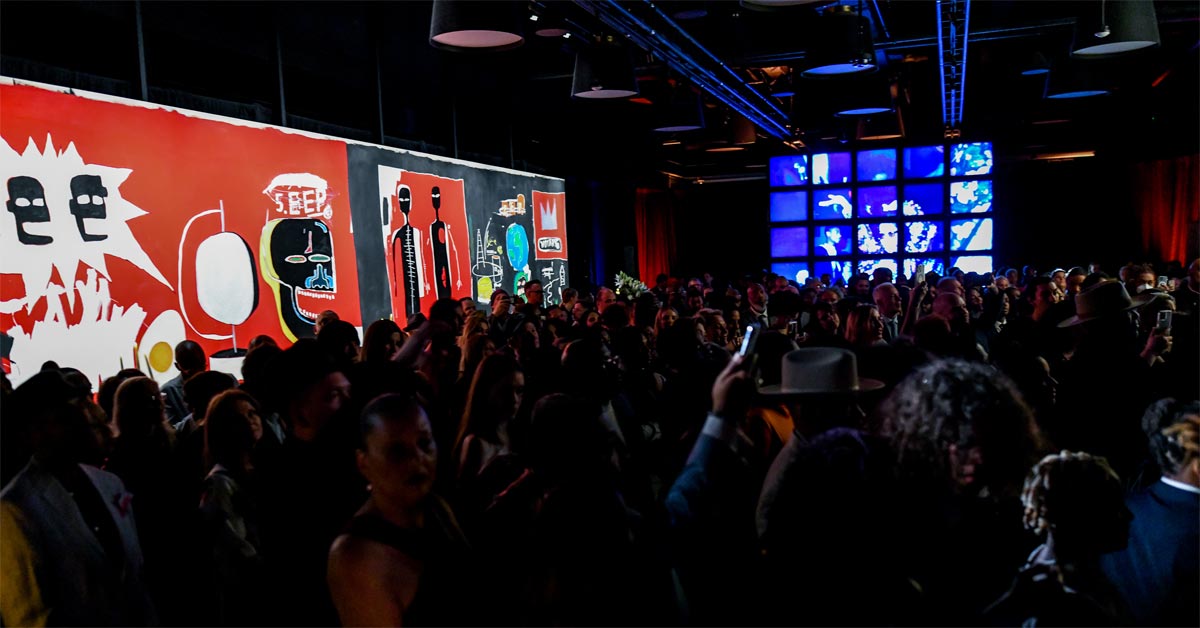6 August 2022
Exploring music and society through artworks by Jean-Michel Basquiat at exhibitions in New York City and Vienna

Jean-Michel Basquiat stands for a new way of communicating social topics concerning inequality, racism, capitalism by using elements from music and art with dadaistic-automatic writing for an expressive mix. The artist, who lived from 1960 until 1988, implemented word raps from music (hip-hop), the dramaturgy of cartoon stories, and the dynamic painting style of street art for landing messages in a fast-paced society flooded with media content.
Basquiat was embedded into the cultural life of New York City and incorporated the city's vibrating esthetics into his artwork. In the early 1980s he appeared as the protagonist of this 'New York Beat' in the film 'Downtown 81' together with Debbie Harry (Blondie), Kid Creole and the Coconuts, John Lurie, Tuxedomoon, etc. 'New York Beat' was the original title of the 2020 released film (trailer) showing 19-years old Jean-Michel Basquait in the beginning of his career as a painter trying to sell his work to earn his rent.
Recently, the ongoing exhibition 'Jean-Michel Basquiat: King Pleasure©' of over 200 never before or rarely shown artworks with reconstructed living and studio rooms with clothing pieces, records of the artist at the Starrett-Lehigh Building in Chelsea, Manhattan, New York City has been extended to 31st October. The exhibition is organized and curated by Jean-Michel Basquiat's family and shows details of his working process like books he used for the research such as his sisters Lisane Basquiat and Jeanine Heriveaux explained in a video published by Rolling Stone.
Before the show ends in New York, the Albertina Museum in Vienna opens the retrospective 'Jean Michel Basquiat. Of Symbols and Signs' on 9 September with focus on the exploration of the artist's visual language for deciphering works like one of his key pieces, the 'Tuxedo' which resembles the elegant clothing piece tuxedo with the arrangement of 15 single drawings of street poetry. The texts were written first with black on white and were reversed to white on black. The author of the book 'The Art of Jean-Michel Basquiat' (2017) and art historian Fred Hoffman who worked closely with Jean-Michel Basquiat writes in an article published by the Quarterly of the Gagosian Gallery about the development of the 'Tuxedo' and the significance for identity and the hip-hop culture of the 1980s: "During production, I didn't give much thought to Basquiat's intention in reversing the original artworks, but from the moment Tuxedo was completed, it became clear that his decision to turn everything black in the work into white and everything white into black was not merely a look he desired to achieve."
Image: Insight into the opening party of the exhibition 'Jean-Michel Basquiat: King Pleasure©' in April 2022 in New York City. The picture shows the rebuilt VIP room of the nightclub 'The Palladium' with the artist's original murals. Photo: © Madison McGaw / BFA.
|


